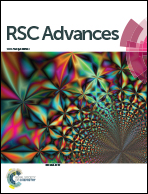Theoretical analysis of the U L3-edge NEXAFS in U oxides†
Abstract
Rigorous theoretical studies of the electronic structure to describe the Uranium L3 near edge X-ray absorption fine structure, NEXAFS, of different oxidation states of U in UOx are reported. Key features of the spectra are related to the ligand field splitting of the excited state orbitals. Furthermore, the ligand field splitting is related to the different extent of covalent mixing that occur at different U–O distances for the different oxidation states. The theoretical relative energies and intensities are based on electronic wavefunctions for cluster models of the oxides. This allows a direct relationship to be established between the L3-edge NEXAFS features and the covalent mixing in the oxides. Correlations are established between the width of the L3 NEXAFS and the U–O distance and these correlations are shown to reflect the character of the chemical interaction between the U cations and the O anions.


 Please wait while we load your content...
Please wait while we load your content...